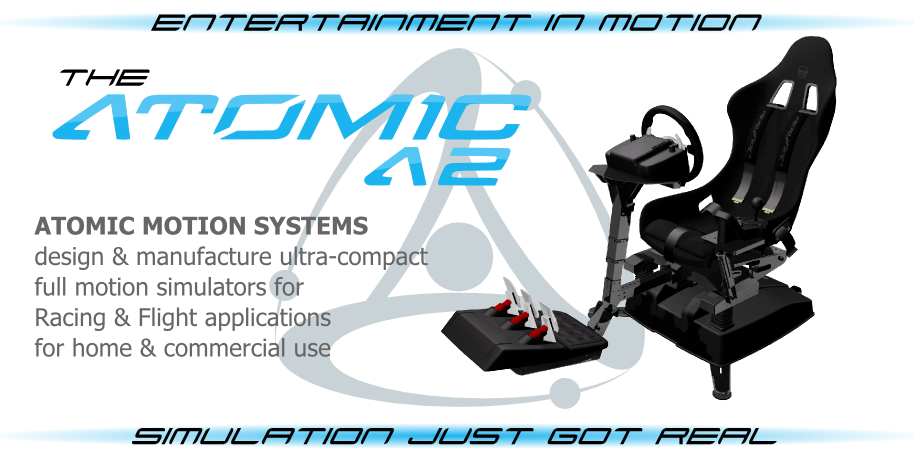Atomic Motion Systems have announced their intentions to add HMD support (starting with the Oculus Rift) to their motion simulator platforms to create the ultimate in motion feedback.
A Moving Experience
One of the many missing pieces in the puzzle of total immersion virtual reality is convincing your brain that your body is actually experiencing what your eyes are being shown. Motion simulation platforms are one way to ‘suggest’ to the user that forces associated with real motion are occurring when playing a game. Atomic Motion Systems (aka JoyRide Simulators) have been producing top-flight yet affordable (within reason) simulators offering just this sort of suggestion for some time. It’s likely though that you’re most familiar with their 2012 partnership with Nissan on the ‘Built to Thrill’ Wingsuit Simulation Experience, commissioned to promote the company’s Juke vehicle. Yes, a tenuous link I grant you, but the Wingsuit Simulator Atomic came up with was a successful and intriguing peek into what might be possible in the commercial / consumer virtual reality market should the two technologies come together. They also made an appearance at the recent London VR Developer Meetup held earlier this month. The Wingsuit Experience was built on the company’s A2 Motion Platform. Described on the company’s website thus:
…delivers a truly realistic ride experience that aims to match the large simulators found at event halls. The Atomic is designed for gaming and professional simulation training and can be configured as a single unit or multi-rider set up.
..the A2 is a compact and powerful 2DoF (Degrees of Freedom) motion chair, designed to deliver Pitch and Roll experiences that match your in-game experience. The company has now indicated that it is actively developing Oculus Rift integrated support for the A2. The following quote from the company outlines their plans:
Atomic Motion Systems’ A2 platform represents a significant step forward in active motion simulation. Its patented force assist technology allows blistering performance, only found in much more highly priced systems, to be achieved in an inexpensive ultra compact, low power consumption unit. Atomic’s Simphynity software allows the A2 to interface directly to the physics engine of over ninety popular, off the shelf game and simulation titles and the list is ever growing. The A2 was designed with 3d head mounted displays in mind. The forthcoming release of Simphynity is compatible with the Occulus Rift, arguably the new benchmark for 3D displays. It overcomes the problem of interference from themotion of the simulator with the Rift’s sensors, stabilising the image to the user’s local frame and providing the ultimate immersive experience.
The thought of ground-up VR integration with a motion platform as advanced as the A2 is enticing indeed. The game genres that could be hugely enhanced by the technology are wide and varied. In fact, the company’s proprietary software already claims support for over 90 games including Racing, Flight and RollerCoaster Sims. Having said that, integrating the Rift support whilst combating a potentially more acute issue with nausea compounded by physical movement not tracked by the existing development kit may prove a challenge. Even when Rift devices appear with positional tracking I can imagine integration being less than straightforward. Nevertheless, I’m very much looking forward to seeing the results. We’re hoping to speak to Atomic soon on their plans and hopefully get some more concrete technical details for you. Stay tuned as always for updates soon. You can find more information on Atomic Motion Simulators and their A2 system at their website.







